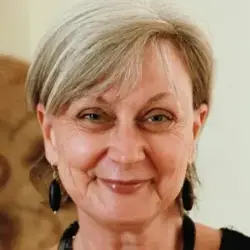COVID conspiracies – should we ignore them?
Myths, false facts, conspiracies, and disinformation are everywhere.
It’s true, it probably has always been this bad on social media, but never before has the disinformation had such important, widespread and life-threatening potential.
The hydroxychloroquine thing is a perfect example of the way disinformation can take hold and take over as a result of rapid spread and celebrity support.
Do you know that after Texan doctor and preacher Stella Immanuel (who describes herself as “God’s battle-axe and weapon of war”) took to the steps of the US Supreme Court on 27th July declaring, against all the scientific evidence, that hydroxychloroquine is the definitive “cure for COVID19”, Madonna tweeted words of encouragement and support to her via her own 15 million followers. So what spreads faster than coronavirus? Disinformation!
We need to not make things worse
As health professionals we really need to be on top of the truth about COVID 19 and try not to fall prey ourselves to misleading claims and conspiracy theories.
Despite our instinct to do so, conspiracy experts tell us that one of the worst things we can do is actively identify and debunk conspiracy theories. The problem with doing so is that, despite our best intentions, people tend to remember the conspiracy theory you introduce them to rather than the debunking message.
I’m not going to contribute to the spread of disinformation by talking about the details of the many and varied conspiracy theories that are alive and well on the internet here. I’m sure everyone will have come across something that they know is blatantly and unscientifically false, but which seems to be believed by many.
I do want to suggest though, that if the people we are talking to are already aware of a conspiracy theory and are inclined to believe it, we probably have a duty as health professionals to talk to them about it.
What should we do?
Unfortunately, every day we are watching people take terrible risks with their own health and the health of others. Some of those people are doing so because they object to being told what to do or because they have financial concerns that outweigh their health concerns; but others are not wearing masks and not social distancing because they have absorbed misinformation and half-truths about the nature of the virus, the way it is spread and the demographics of its victims.
As health professionals we are in a good position to help people understand better what this pandemic, and the public health measures needed to combat it, are all about.
If you ask someone what they already believe about COVID 19 you will not be contributing to the spread of disinformation. You will however be giving yourself an opportunity to help them understand the facts. That might just go a long way towards helping them behave in ways that protect themselves and the community until the vaccine arrives. It might also improve their psychological wellbeing to know they are in possession of reliable information.
Confrontation and argument won’t change anyone’s mind, but a little reliable information from a respected professional just might.
One of the important reasons that conspiracies are so popular is that they are relatively stable – especially compared with scientific information that, to the outsider, seems unreliable because it, and the advice stemming from it, keeps changing. People need to understand that as we learn more, we need to modify our positions. It’s just the nature of science, but to many it must feel like shifting sand compared with the solid rock of a good conspiracy. Understanding how scientific knowledge evolves over time may be a helpful thing for many of those who are drawn to a good conspiracy theory.
There are many places to go for information about science-based information on COVID 19. If you are a little lost, try starting at any of these places:
- WHO https://www.who.int/emergencies/diseases/novel-coronavirus-2019
- Australian Government https://www.health.gov.au/
- Health Direct https://www.healthdirect.gov.au/coronavirus-covid-19-symptoms-and-how-the-virus-spreads-faqs
- The websites of the Departments of Health in your state
- Australian Academy of Science https://www.science.org.au/curious/people-medicine/covid-19-facts
- WHO global research database https://www.who.int/emergencies/diseases/novel-coronavirus-2019/global-research-on-novel-coronavirus-2019-ncov
- Dr Norman Swan’s Coronacast podcast on ABC radio https://www.abc.net.au/radio/programs/coronacast/
- https://www.scientificamerican.com/public-health/
AND
- There’s an e-newsletter from Scientific American called “smart useful science stuff about COVID 19” by science writer Robin Lloyd that you might find useful. It summarises and provides links to a wealth of the most recent scientific information several times a week. Here’s a link to some samples https://robinlloyd.substack.com/

Jan is Sydney GP, private psychological medicine practitioner in Sydney’s inner west and a GP educator for Black Dog Institute.
Have you ever been on your way to work and asked yourself “I don’t really feel well . . . should I really be working clinically today” – and yet still turned up and completed a full day’s work?
*In April 2021, approximately 619,000 older Australians (aged 65 and over) were employed in the labour force", and at 66 years, I’m proud to be included in this statistic. By Tessa Moriarty
For as long as I have been in practice (and that’s a long time!) I have done my best to avoid looking after old people.

